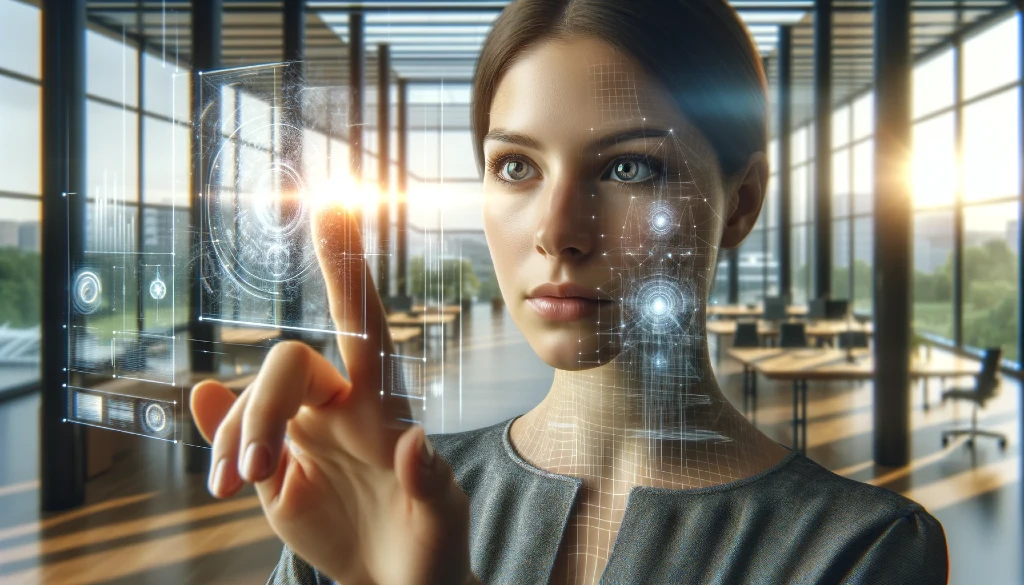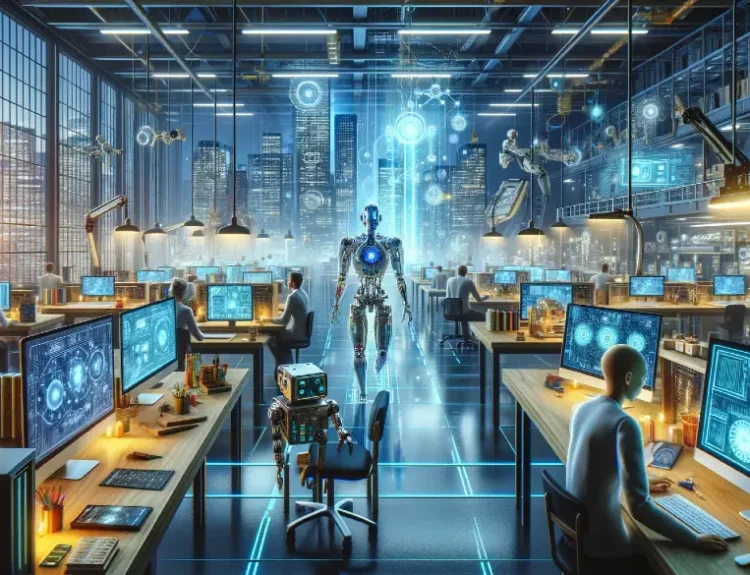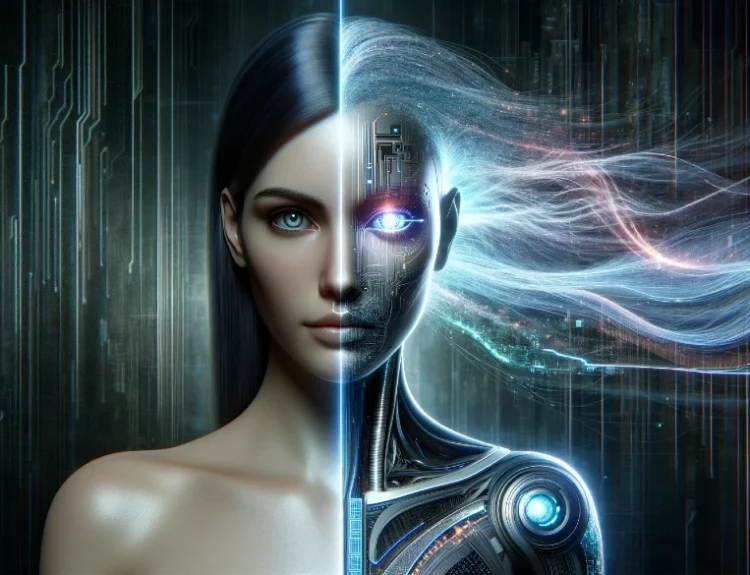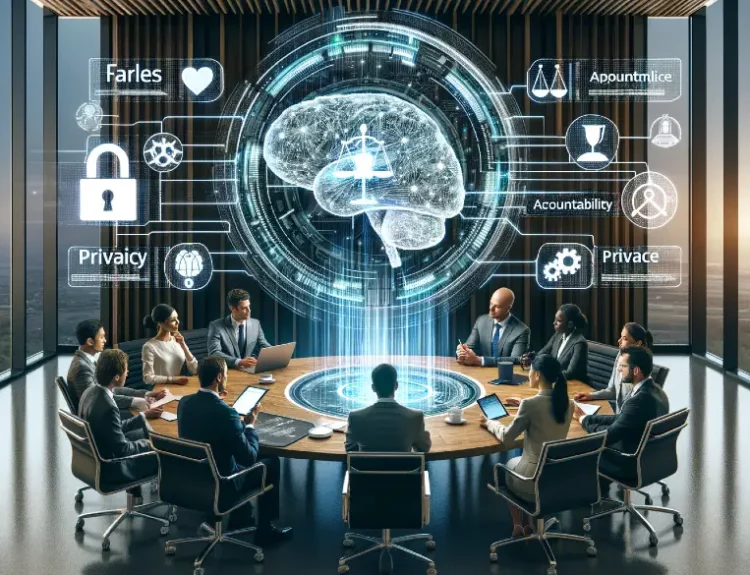Introduction
The human experience with computers has undergone a remarkable transformation. Gone are the days of clunky keyboards and cryptic commands. Today, we interact with our machines in a more intuitive and natural way, thanks in no small part to the ever-evolving field of Artificial Intelligence (AI). AI is rapidly reshaping the landscape of Human-Computer Interaction (HCI), weaving itself into the very fabric of how we engage with technology.
This integration presents a future filled with exciting possibilities. Imagine interfaces that anticipate your needs, personalize your experience, and offer intelligent assistance that feels effortless. This is the promise of AI-driven human-centric computing – a world where technology seamlessly adapts to us, not the other way around.
But achieving this future requires careful consideration of user-centered design principles. As AI continues to permeate our interactions with computers, ensuring user-friendliness and intuitive interfaces will be paramount. In this blog, we’ll delve into the fascinating intersection of AI and HCI, exploring the innovations shaping the future, and how user-centric design plays a vital role in this evolution.
The Rise of AI’s Interaction with Human Computing
The traditional model of human-computer interaction often felt rigid and one-dimensional. Users adapted their behavior to fit the limitations of the technology. AI-driven human-centric computing flips this script, placing the user’s needs and experience at the forefront. So, what exactly does this look like?
Imagine a virtual assistant that learns your daily routines and preferences. It might proactively suggest scheduling appointments during your downtime or pre-ordering groceries based on your usual shopping list. This level of personalization goes beyond simple automation; it anticipates your needs and provides intelligent suggestions that streamline your day.
The benefits extend far beyond personal use cases. In healthcare, AI-powered systems can analyze vast amounts of medical data to personalize treatment plans for individual patients (Intelligent computing solutions for humans). In education, AI tutors can adapt their teaching styles based on a student’s learning pace and comprehension (Enhancing interactions with AI technologies). These are just a few examples of how AI-driven human-centric computing is transforming various sectors, placing the power of technology firmly in the hands of the user.
However, achieving true human-centricity requires more than just powerful algorithms. Here’s where the concept of AI algorithms for human-centered computing comes in. These algorithms are designed specifically to understand human behavior, preferences, and communication styles. By incorporating these elements, AI systems can interact with us in a more natural and intuitive way, fostering a sense of collaboration rather than cold, utilitarian interaction.
Innovations in AI-powered Human-Computer Interfaces
The rise of AI-driven human-centric computing is fueled by a constant stream of groundbreaking advancements in AI technology. These innovations are transforming the very way we interact with our devices, paving the way for truly immersive and interactive experiences.
Let’s delve into some of the most exciting innovations shaping the future of AI-powered human-computer interfaces (Advanced AI technology for human-computer interfaces):
- Voice Assistants: These ubiquitous digital companions have become an extension of ourselves. Using natural language processing (NLP), voice assistants like Siri and Alexa can understand and respond to our spoken commands, allowing us to control devices, access information, and even manage our schedules hands-free.
- Chatbots: Beyond simple customer service interactions, chatbots powered by AI are becoming increasingly sophisticated. They can engage in nuanced conversations, answer complex questions, and even provide personalized recommendations.
- Augmented Reality (AR) and Virtual Reality (VR): AI plays a crucial role in enriching AR and VR experiences. By understanding a user’s environment and intent, AI can overlay digital elements onto the real world (AR) or create hyper-realistic virtual environments (VR) that adapt and respond to user actions.
- Intelligent User Interfaces (IUIs): These next-generation interfaces leverage AI to learn user behavior and preferences. They can dynamically adjust layouts, personalize content recommendations, and anticipate user needs, creating a truly seamless and intuitive interaction experience.
These advancements represent just a glimpse into the vast potential of AI-powered interfaces. As AI technology continues to evolve, we can expect even more innovative and immersive ways to interact with computers, blurring the lines between the physical and digital worlds.
Enhancing Interactions with AI Technologies
The potential of AI-powered interfaces hinges on one crucial factor: user experience. While AI boasts impressive capabilities, ensuring smooth and intuitive interactions remains paramount. Here’s how we can bridge the gap between cutting-edge technology and user-friendly design:
- Focus on User-Centered Design Principles: Human-centered design principles should be the cornerstone of any AI interface. This means prioritizing ease of use, clear communication, and error prevention. Interfaces should be intuitive and visually appealing, avoiding overwhelming users with complex functionalities.
- Transparency and Explainability: Users deserve to understand how AI systems arrive at decisions or recommendations. Implementing explainable AI (XAI) techniques can build trust and user confidence. By providing clear explanations for AI outputs, users feel more comfortable interacting with the technology.
- Natural Language Processing (NLP): Conversational interfaces powered by NLP are key to fostering natural and engaging interactions. AI systems should be able to understand the nuances of human language, including slang, sarcasm, and context. The ability to process spoken and written language in a natural way creates a more human-like interaction experience.
- Continuous Learning and Improvement: AI systems shouldn’t be static. By incorporating feedback mechanisms and user data analysis, AI interfaces can continuously learn and adapt. This allows them to refine their responses, anticipate user needs more effectively, and ultimately enhance the overall interaction experience.
By prioritizing these elements, we can unlock the full potential of AI-powered interfaces. Interactions will become more intuitive, efficient, and even enjoyable, paving the way for a truly symbiotic relationship between humans and technology.
The Future of AI’s Interaction with Human Computing
The future of human-computer interaction (HCI) is brimming with possibilities fueled by the ever-evolving potential of AI. Here’s a glimpse into what the coming years might hold:
- Augmented Reality (AR) Integration: Imagine a world where AI seamlessly blends the physical and digital realms through AR. Real-time data overlays projected onto your environment could provide instant translations, contextual information, or even personalized navigation assistance.
- Virtual Reality (VR) with Emotional Intelligence: VR experiences powered by AI could become hyper-realistic and emotionally intelligent. AI could adapt virtual environments based on a user’s emotional state, creating truly immersive and personalized experiences.
- Proactive AI Assistants: Our AI companions may evolve from reactive assistants to proactive partners. Imagine an AI system that anticipates your needs and proactively suggests actions, reminding you to book a flight for an upcoming event or suggesting relevant learning materials based on your current project.
- AI-powered Personalization: The level of personalization could reach unprecedented heights. AI could curate your entire digital experience, from news feeds and social media suggestions to personalized learning programs and healthcare recommendations.
However, alongside these exciting possibilities lie ethical considerations and potential challenges. Biases within AI algorithms could lead to discriminatory outcomes, and the increasing reliance on AI could raise concerns about privacy and data security. Therefore, ensuring responsible development and ethical implementation of AI in HCI will be crucial.
By fostering open dialogue, prioritizing human oversight, and implementing robust safeguards, we can ensure AI continues to enhance human-computer interaction in a safe and beneficial way for all.
Conclusion
In conclusion, AI is rapidly reshaping the way we interact with computers, ushering in an era of human-centric computing. AI-powered interfaces are becoming more intuitive, personalized, and intelligent, blurring the lines between technology and human experience. However, achieving a truly user-centric future requires prioritizing user-friendly design, transparency, and continuous learning within AI systems.
The future holds immense potential for AI in HCI, promising a world of seamless interaction, immersive experiences, and proactive assistance. But this future hinges on responsible development and ethical considerations.
Here at Verdict, we share your vision for a future where AI empowers humanity. We’re building a platform where AI learns and evolves through real-world interactions with the insights of our community. Every search, chat, and shared result on Verdict contributes to building an AI that understands and grows alongside you.
Join us on this collective journey! Sign up for Verdict and be part of shaping the future of AI.
Looking for more in-depth explorations of AI’s impact? Visit our blog page for a treasure trove of insightful articles, including “The Role of AI Computer Vision Engineers” and “Revolutionizing Computing: AI in Computer Rigs.” Stay tuned for even more fascinating explorations at the forefront of AI!










